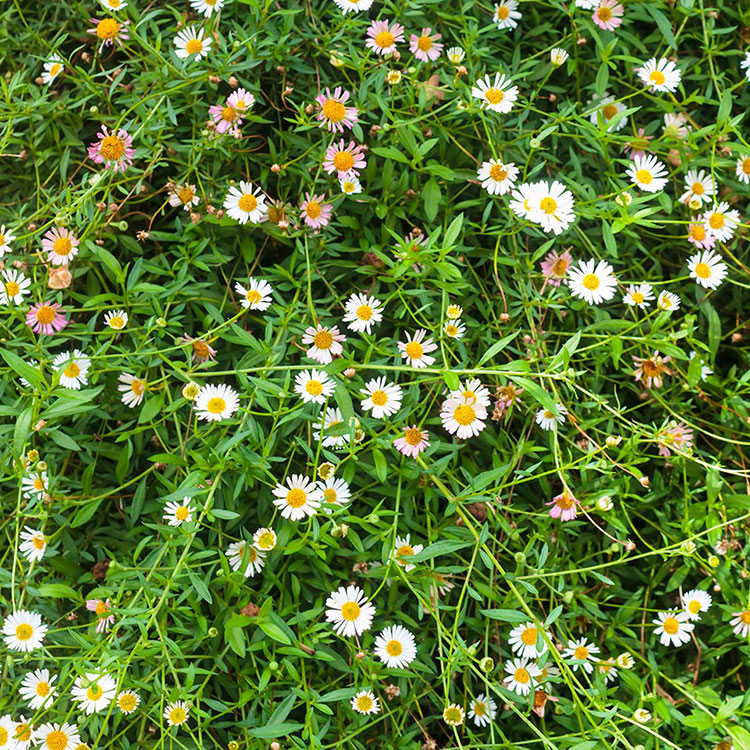Do you ever step outside, take a deep breath—and begin to sneeze uncontrollably as your eyes start to itch and swell?
You are not alone. Many adults and children suffer from seasonal allergies (Asthma and Allergy Foundation of America). Fortunately, there is more help than ever before for seasonal allergy victims.
Allergic conjunctivitis is a seasonal allergy that affects the eyes (Johns Hopkins Medicine). Its symptoms—itchy, watery, red and swollen eyes—are usually caused by exposure to pollen. Contact lens wearers may experience additional discomfort from the collection of pollen and allergy-related eye secretions that can bind to their lenses.
How do you know if your symptoms are caused by an allergy or by another condition or disease? Both allergies and colds cause symptoms of sneezing, congestion, runny nose, watery eyes, fatigue and headaches (Mayo Clinic). Pay close attention to the following, more subtle signs to learn whether you have a cold or an allergy:
- Cold symptoms often appear one at a time. Allergy symptoms occur all at once.
- Cold symptoms usually last from 7 to 10 days, whereas allergy symptoms continue only as long as a person is exposed to the allergy-causing agent.
- Allergies generally cause clear, thin, watery mucous discharge. Colds may bring on a yellowish nasal discharge, suggesting an infectious disease.
- Sneezing is a symptom more common to allergies, especially when it occurs multiple times in a row.
- If you have a fever, it’s not allergy.
- Colds are more common during the winter months, whereas allergies are typically triggered in the spring, summer and fall, when plants are pollinating.
- Pay special attention to your eye symptoms. Generally, if your eyes itch, you have an allergy. If your eyes only burn or sting, you may have dry eye. If there is a thick discharge from your eye, you could have an infection. See your eye care provider for a proper diagnosis and treatment if you are experiencing any eye discomfort.
If you suffer from those unpleasant eye symptoms, you may also experience seasonal allergic rhinitis, commonly known as hay fever (Cleveland Clinic). This is your nose’s reaction to the same pollen: sneezing, congestion, postnasal drip, runny nose and itchy throat. In fact, pollen can travel through connecting ducts from the eyes into the nose.
Pollen is a fine powder released by plants in order to fertilize new seeds (Johns Hopkins Medicine). The kind of pollen that causes allergic reactions comes from non-flowering plants, such as trees, grasses and weeds.
Pollen from flowering plants does not cause allergy problems because it is delivered by insects rather than by the wind. Generally, pollen season in the U.S. lasts from February or March through October, and starts later in the spring the farther north one goes (Asthma and Allergy Foundation of America). In southern states, it can begin as early as January.
Your body’s allergic reaction to pollen is caused by the immune system’s abnormal response to this dust-like substance. Mistaking harmless pollen for a disease-causing agent, your body begins to produce antibodies to fight it off, just as it would for an attacking virus. The body then releases histamines, chemicals that trigger inflammation and increased secretions of the sinuses, nose and eyes.
The best treatment: avoidance
Doctors agree that the best way to control seasonal allergy symptoms is to avoid the pollen that triggers them. That means staying indoors when pollen counts are highest. A good rule of thumb is to try to stay indoors as much as possible on hot, dry, windy days, and on any day between 5 a.m. and 10 a.m.
When you are outdoors, follow these guidelines:
- Minimize walks in wooded areas or gardens.
- Wear a mask while you mow the lawn or garden. Keep grass cut low—no more than 2 inches high—to help prevent pollen from reaching high into the wind.
- Keep hedges in your yard pruned and thin to limit collection of pollen on their branches.
- Dry your clothes and linens in a dryer instead of hanging them outdoors.
When you are indoors, you can take these steps to maximize protection:
- Keep windows closed. Use air conditioning at home and in your car.
- Cover home air conditioning vents with cheesecloth to filter out pollen. Clean air filters frequently—high-efficiency particulate air filters (HEPA) are the best. Clean air ducts at least once a year.
- In your car, set the air conditioner to “recirculate” to keep new pollen from entering the vents.
Medical remedies
If your symptoms are mild, some doctors recommend placing cold compresses directly on your closed eyes for 10 to 20 minutes. If that is not effective, visit your local pharmacy and buy an over-the-counter tear substitute, which can lubricate your eyes and help wash the pollen out.
It is important to treat eye allergies with eye medications. They may sometimes help relieve nasal symptoms as well as eye discomfort, by draining from the eye into the nose. It does not work the other way around, however; nasal sprays are generally prevented by gravity from reaching the eyes.
Eye drops and gels work more quickly and have fewer side effects than oral medicines. In fact, oral antihistamines, while successfully treating nasal allergy symptoms, can actually make eye symptoms worse by drying out your eyes and leaving them with less protection against pollen.
If over-the-counter medicine is ineffective, or if you are not sure that your symptoms are caused by an allergy, see your eye doctor. There are a number of very effective anti-allergy prescription eye drops today that are commonly prescribed by optometrists and ophthalmologists.
If you wear contact lenses, ask your doctor about drops that can help relieve symptoms while keeping your lenses pollen-free. You may want to try daily disposable contact lenses to avoid the problem of pollen and other irritating deposits building up on your lenses. Another option is to visit an allergy specialist, who can give you a shot that will immunize you against the uncomfortable effects of pollen.
Many options exist that will allow you to enjoy the seasonal changes in relative comfort, despite your allergies. With proper care, today nearly everyone can survive allergy season without a lot of distress.

